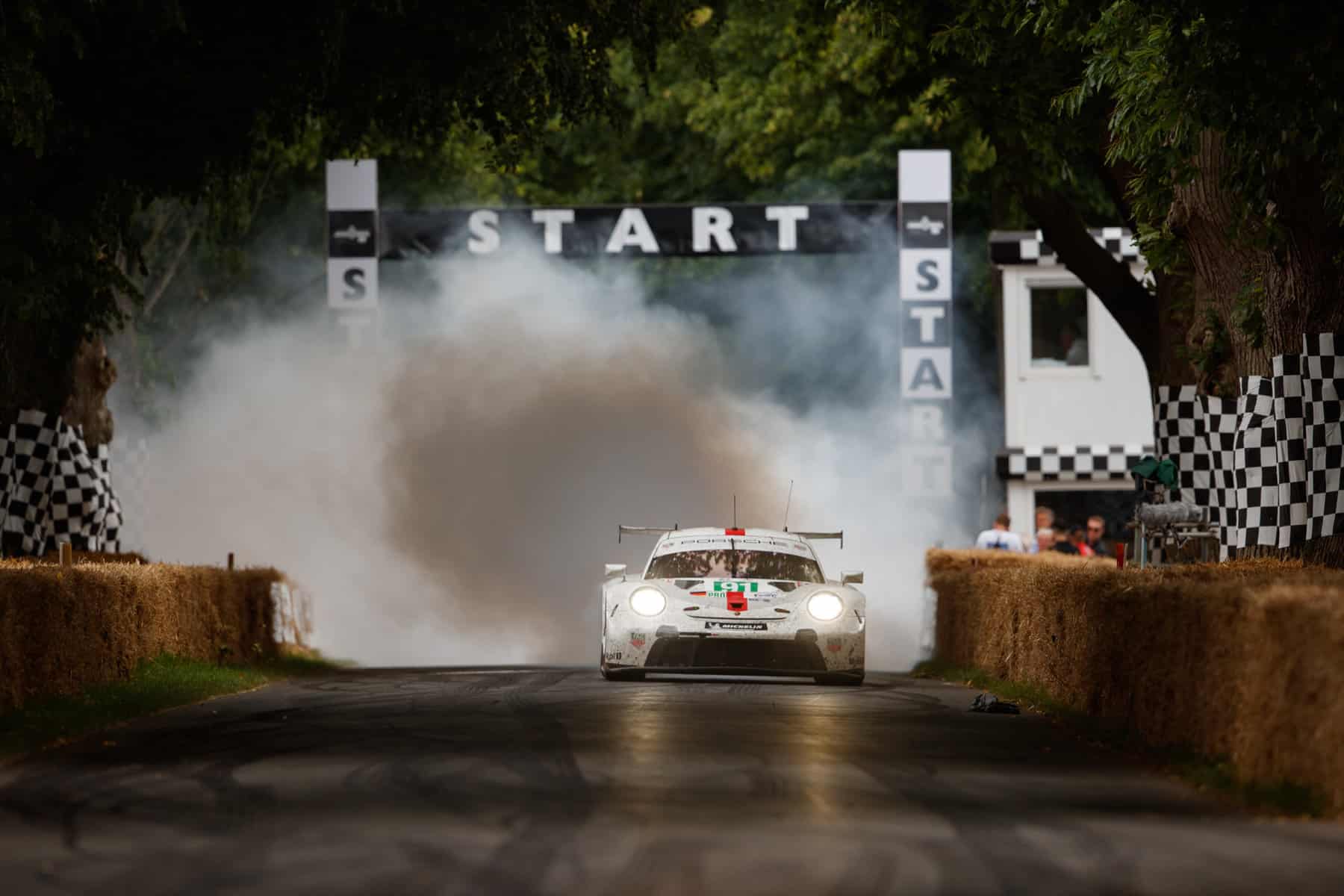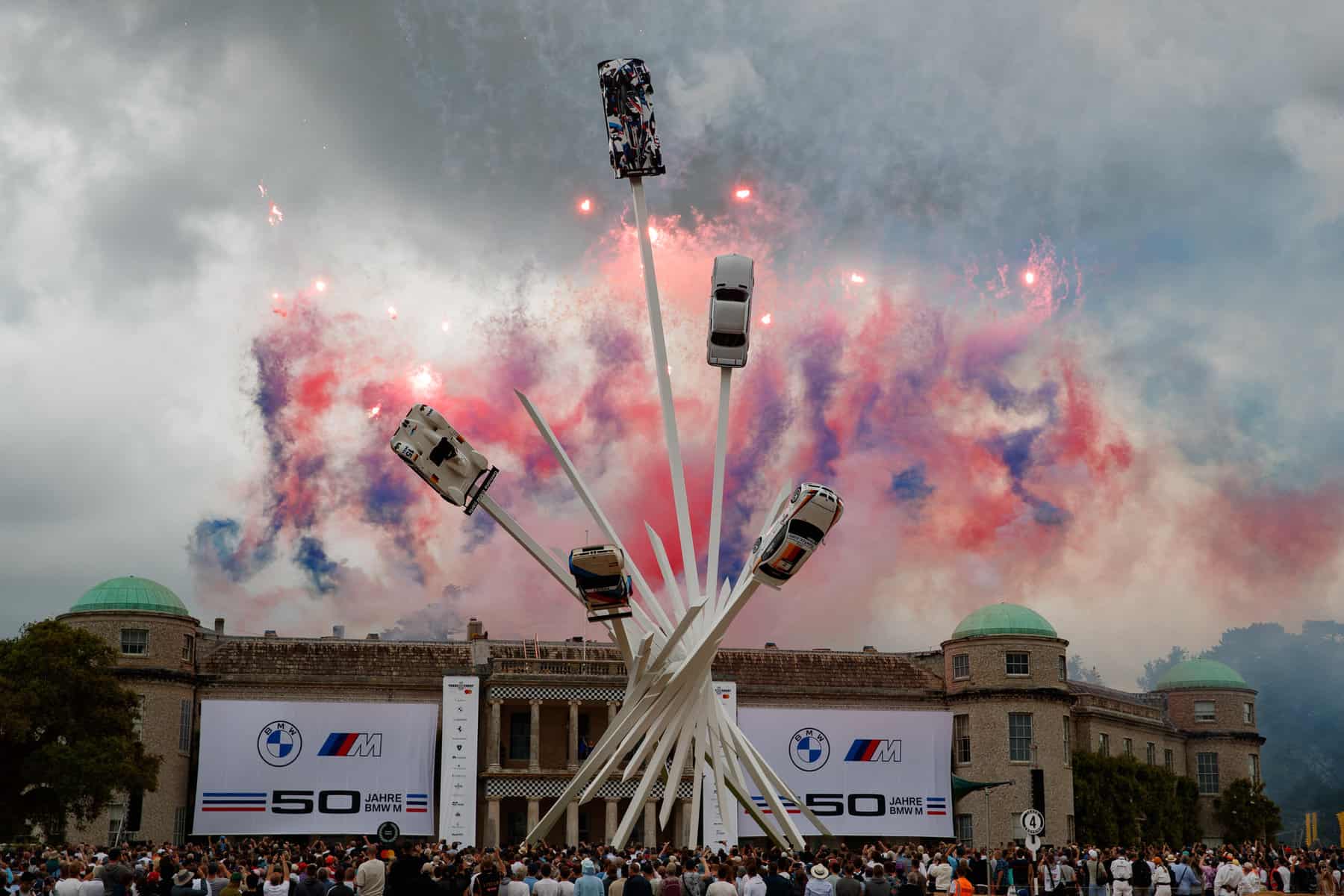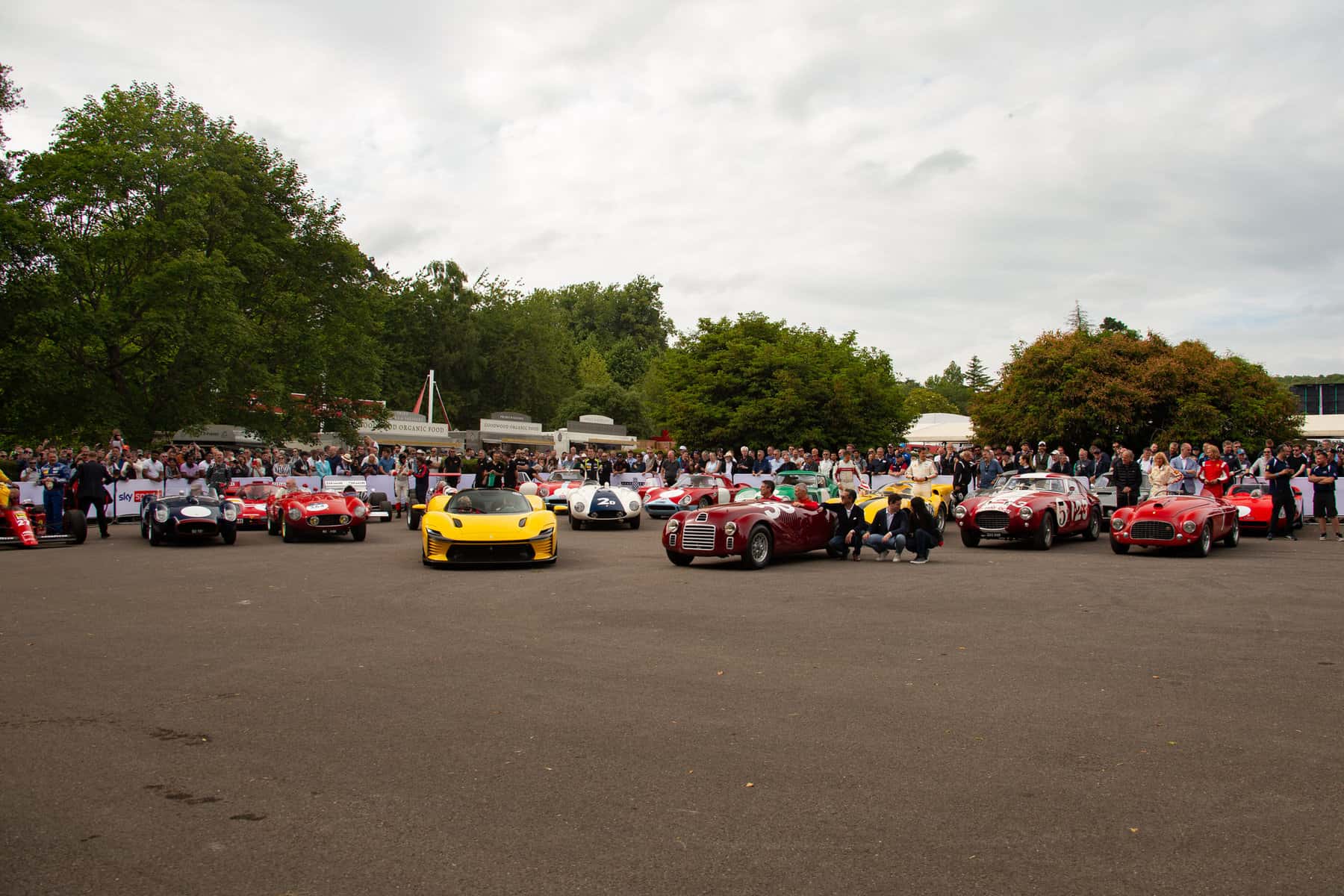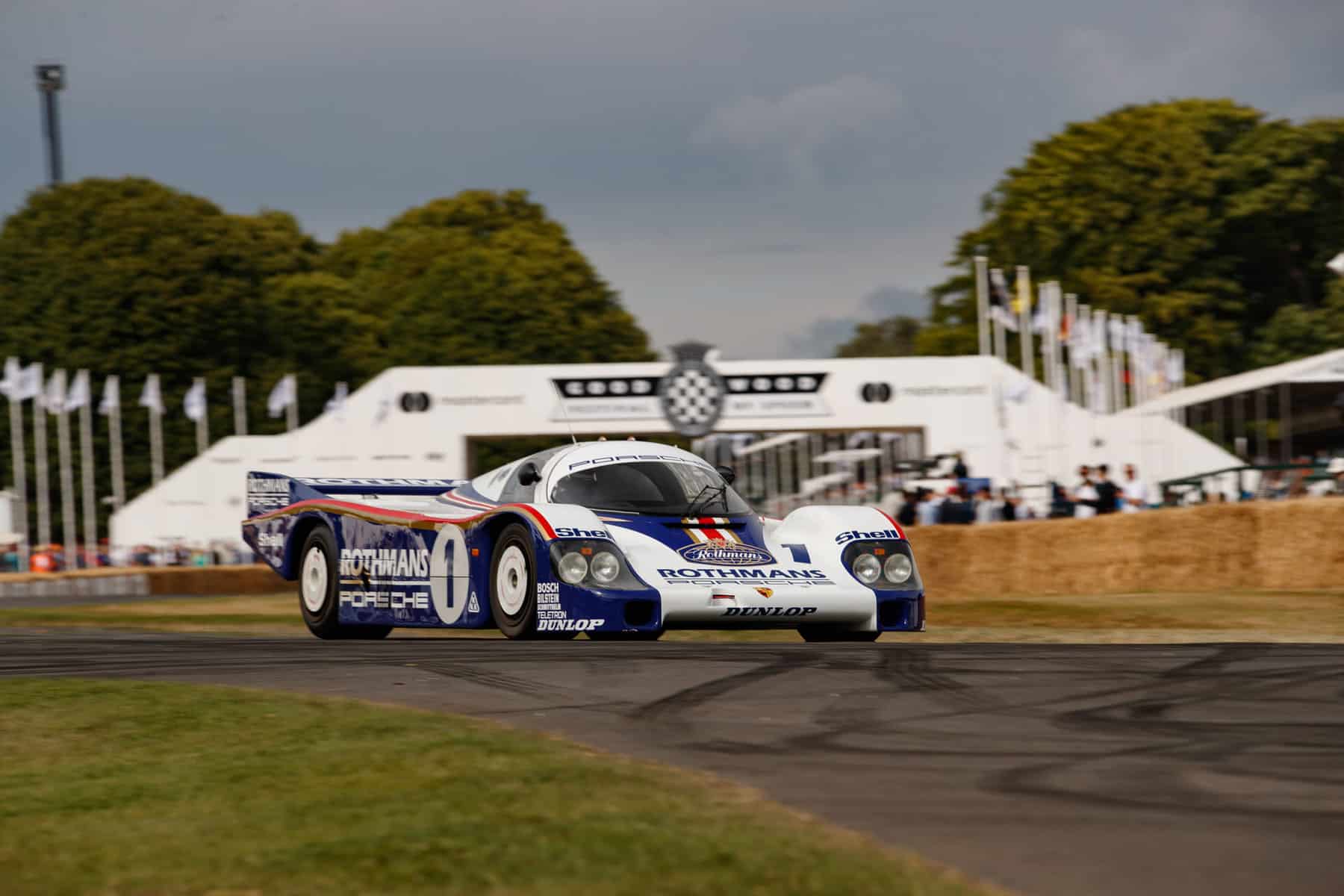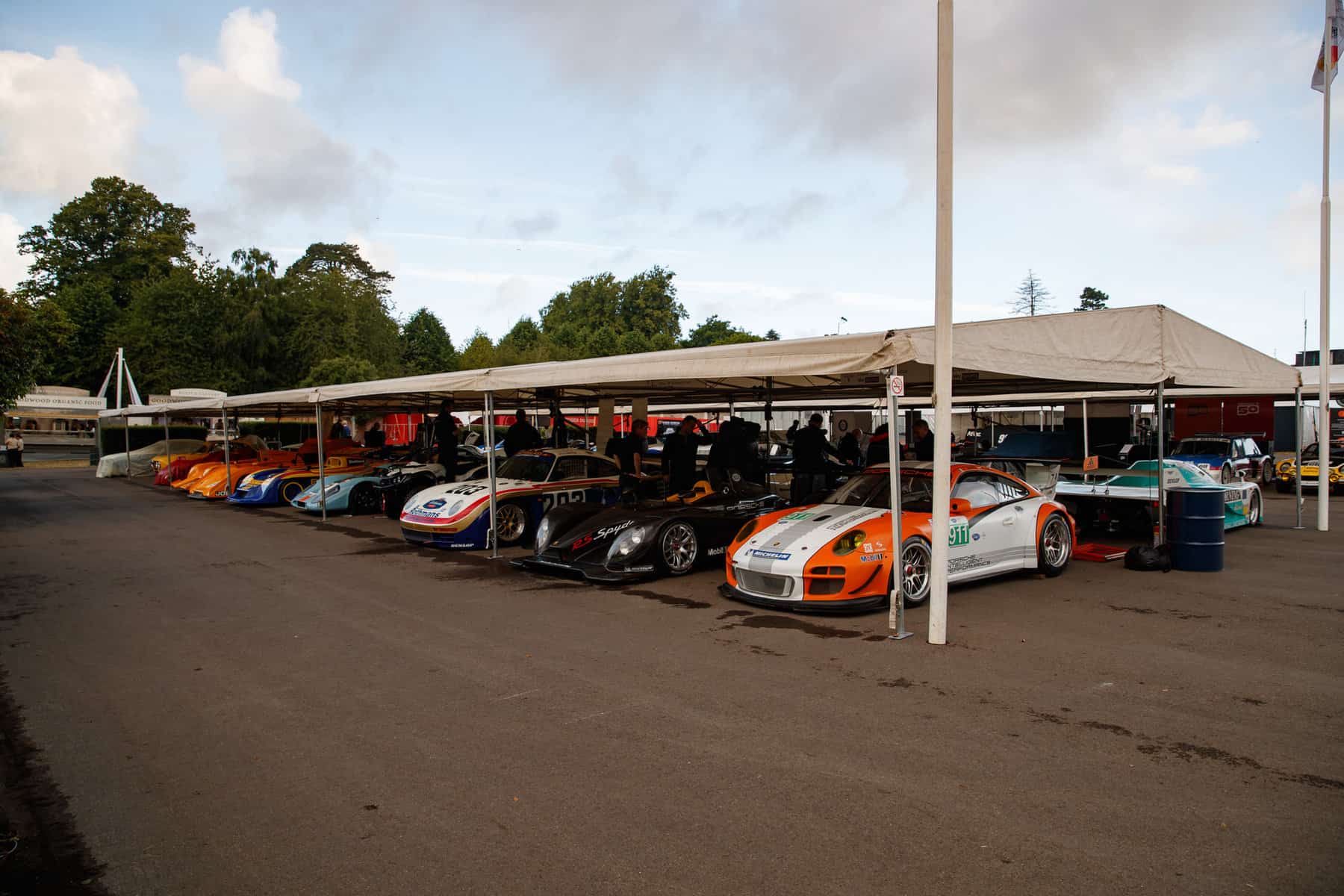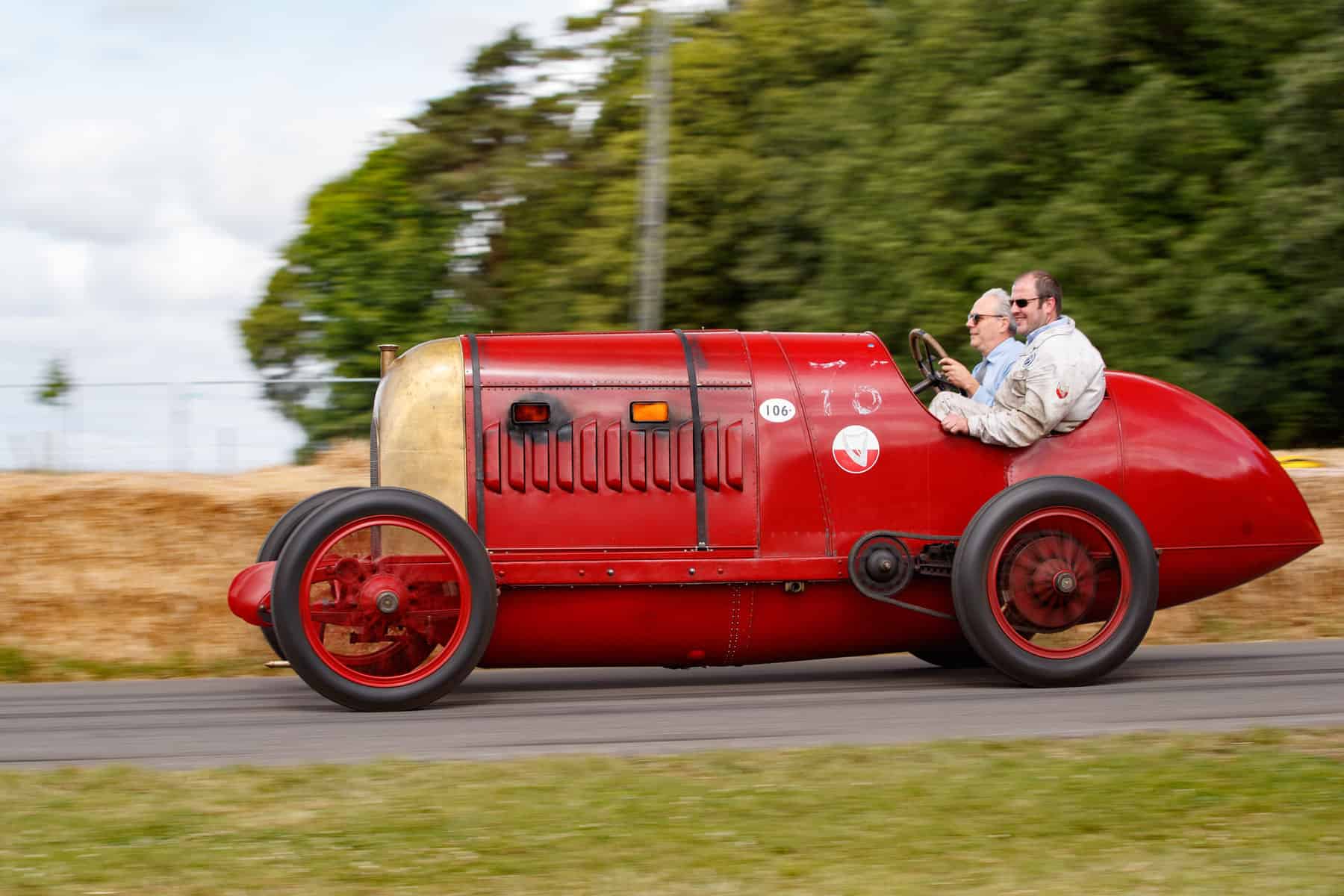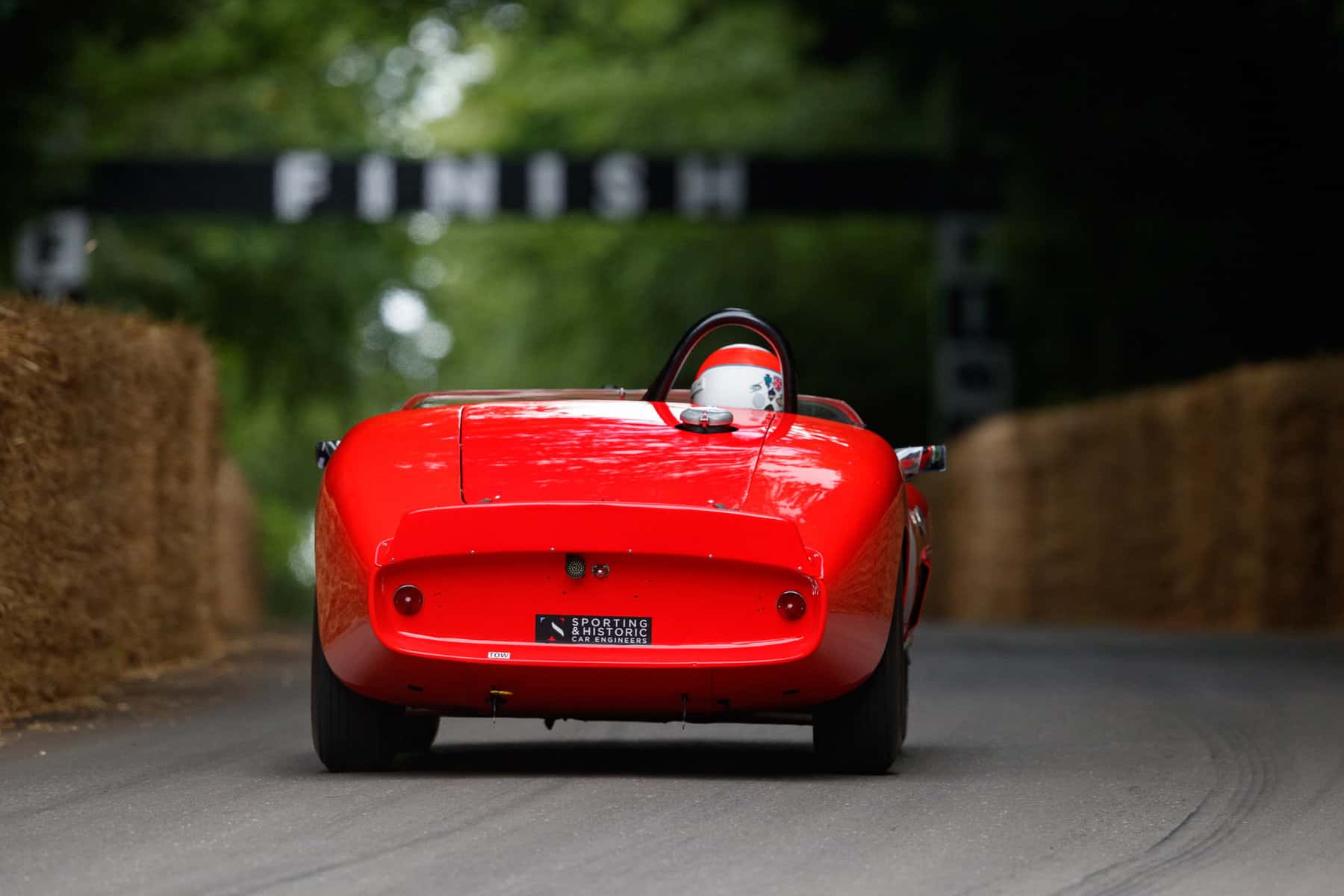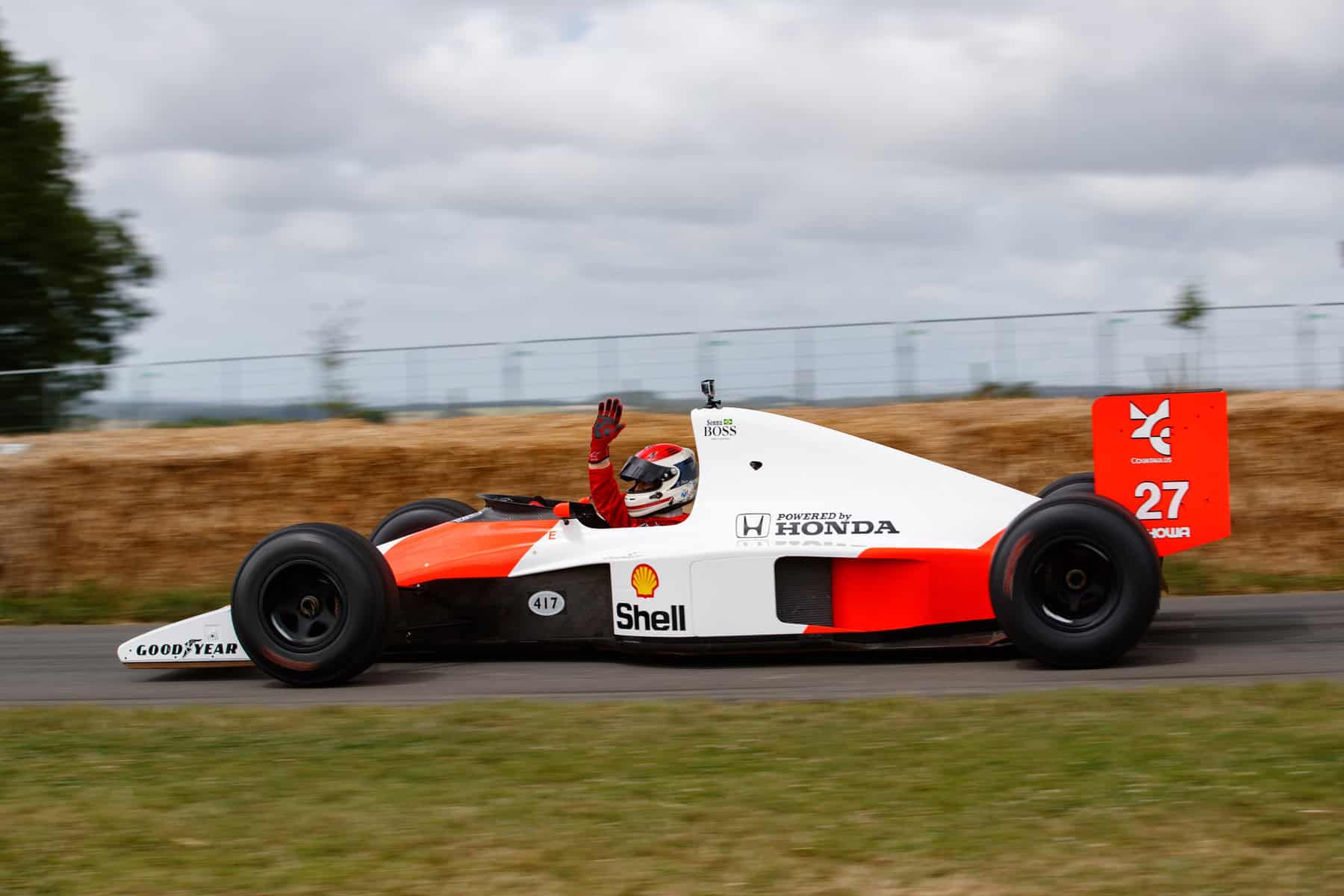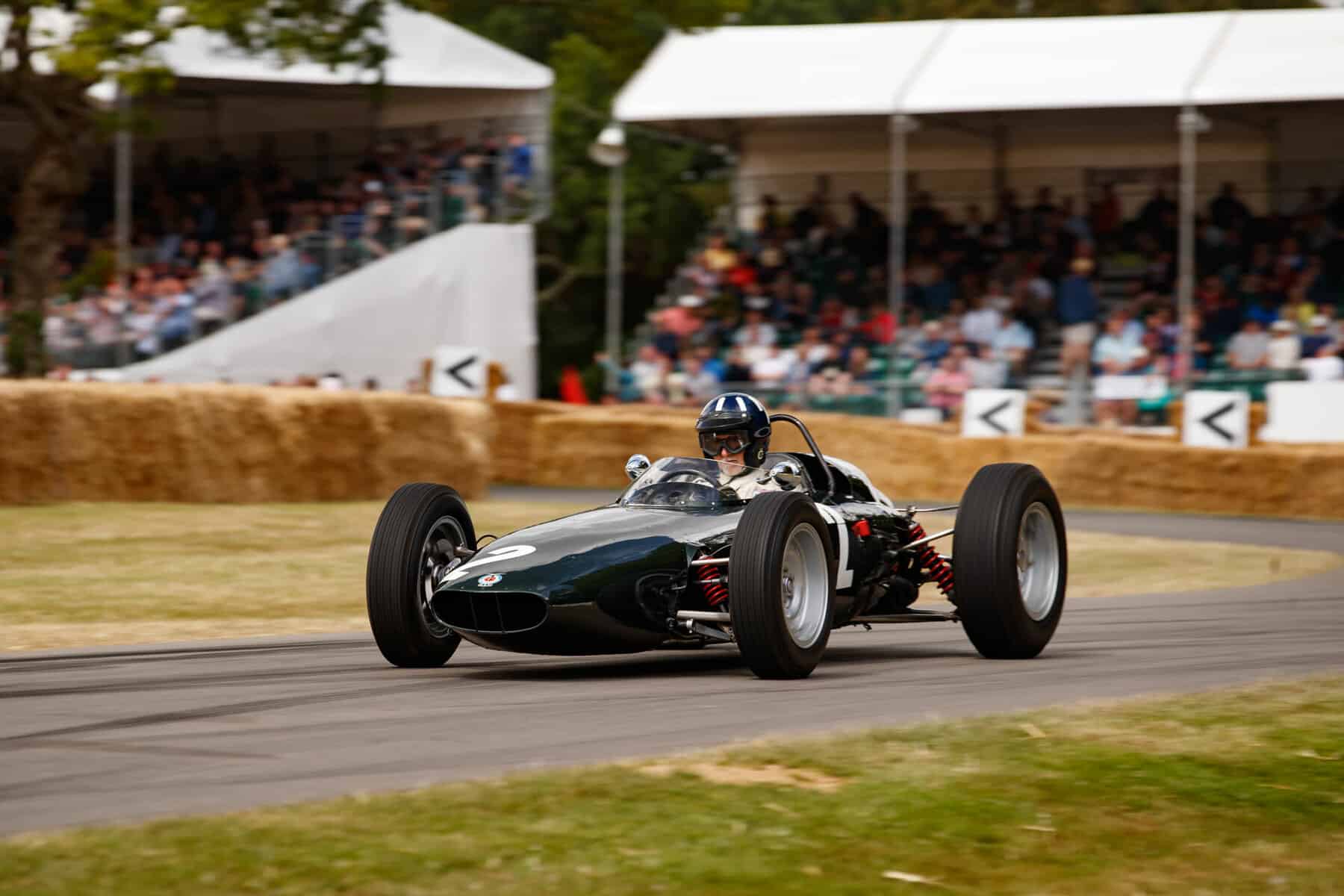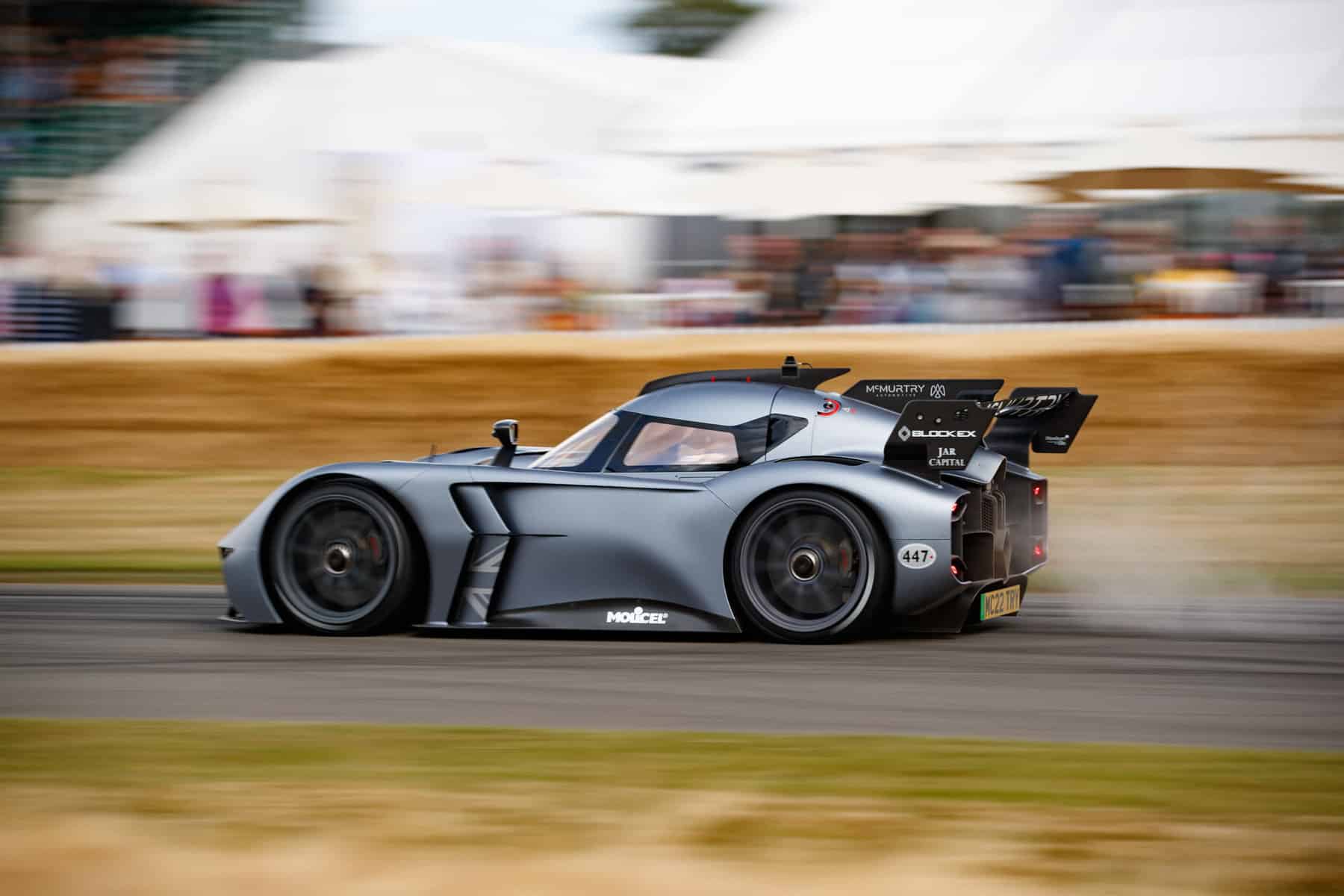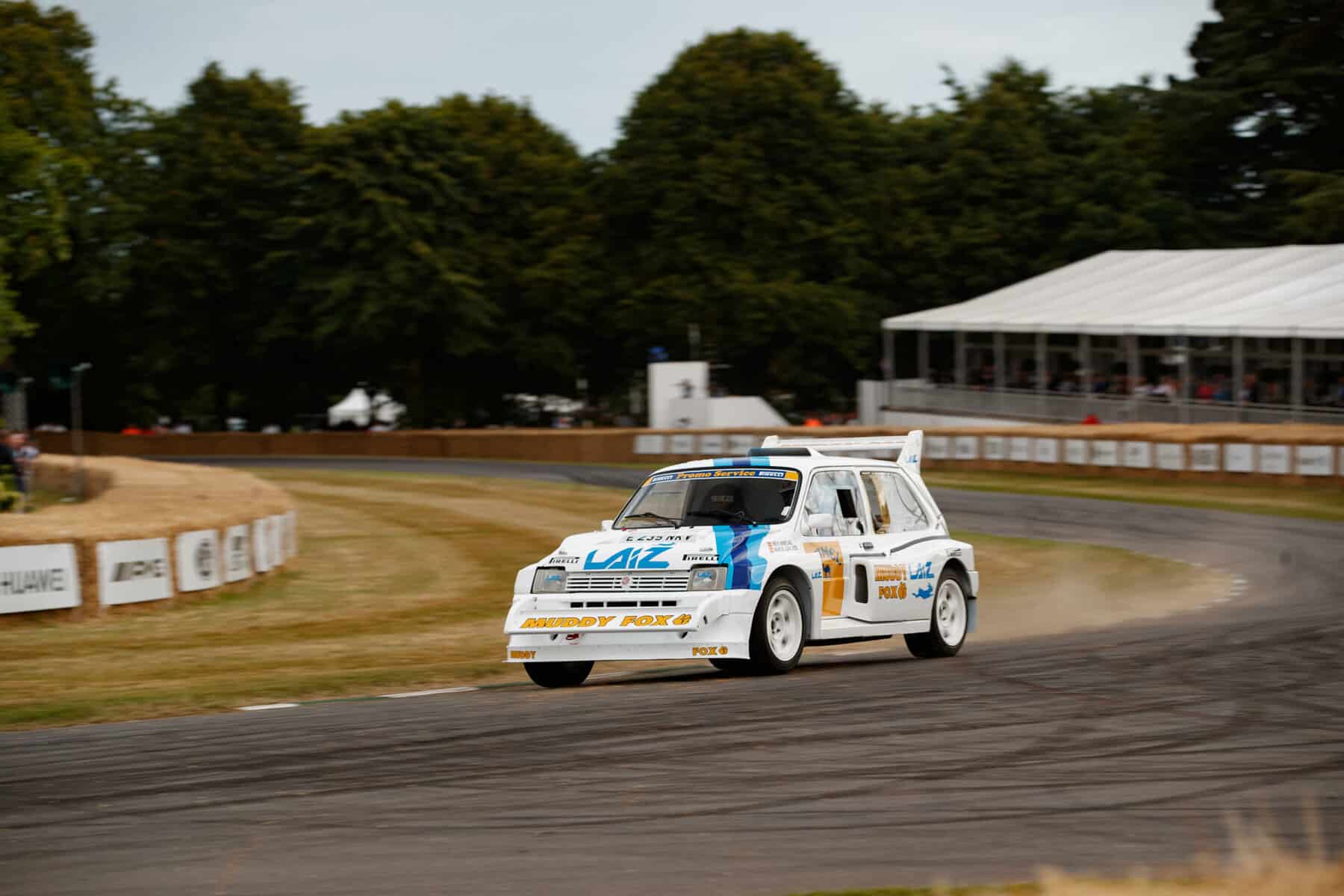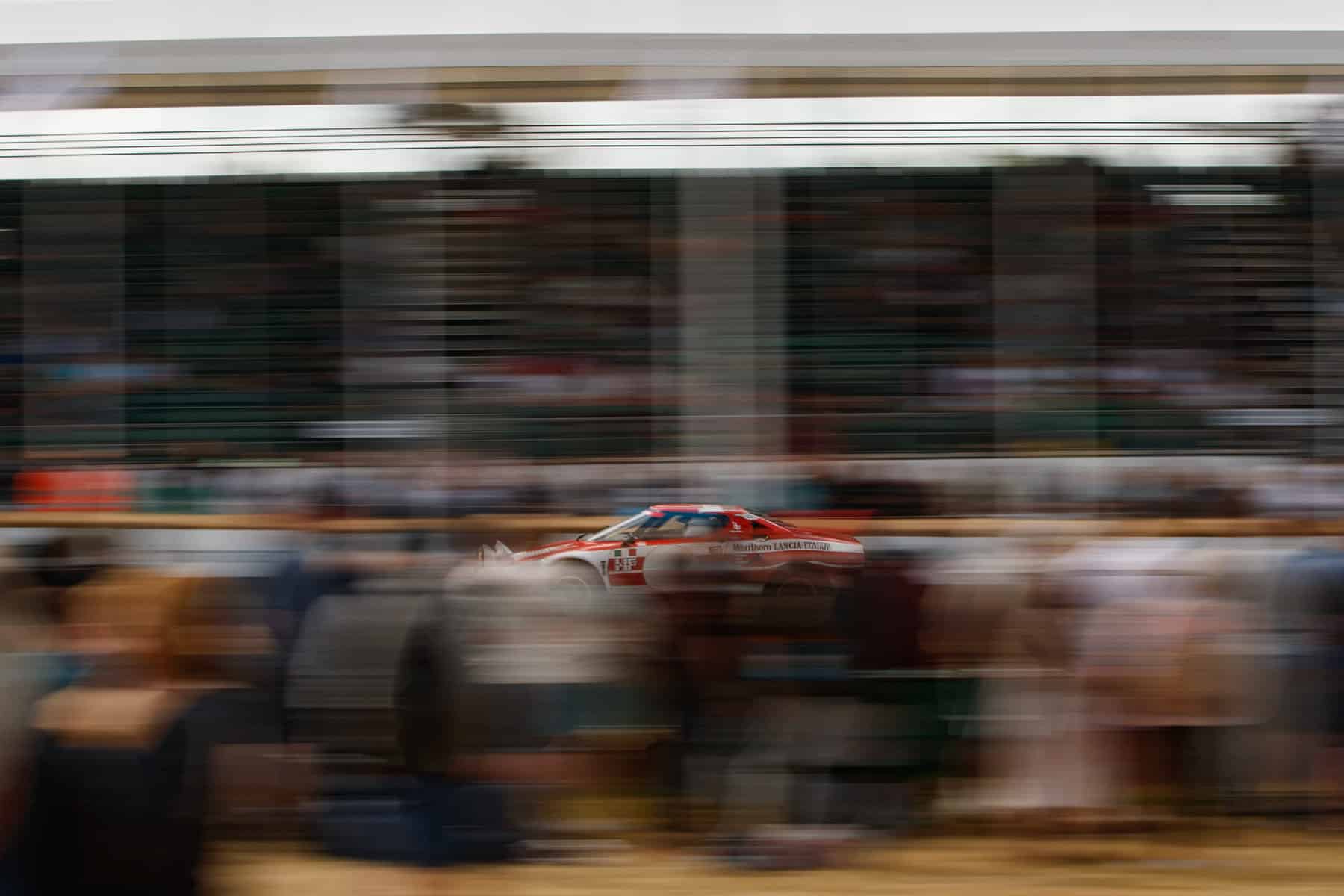Goodwood Festival of Speed 2022
The Duke of Richmond's grand spectacle up close
WORDS & IMAGES BY: WOUTER MELISSEN
A 1908 French Grand Prix–winning Mercedes, a wild drift machine, and a Dakar Rally truck sharing the same piece of track is really only possible at the Goodwood Festival of Speed: a celebration of speed in the broadest sense of the word. At its core, the Festival of Speed is a hill climb on the road in front of Goodwood House.
This is the home of event host the Duke of Richmond. In 1993, he invited a small selection of historic and contemporary road and racing cars to bring back motorsport at Goodwood. It was an unexpected but instant success. Nearly thirty years later, the four-day event attracts tens of thousands of visitors from around the world.
While the hill climb remains to this day, the Festival of Speed also includes a concours d’elegance, proper rally stage, and a large number of pavilions where manufacturers showcase their current and future products. Goodwood is also regularly the scene of world debuts with this year the BMW M3 Touring and Porsche 963 Le Mans racers, for example, breaking cover. For supercar enthusiasts, there is also a massive display of exotic machinery. The likes of Pagani, Koenigsegg, Ferrari, and Bugatti traditionally bring their latest creations, which are also driven up the hill as part of the event.
What makes the Festival of Speed particularly interesting is that not only the old racing cars are invited but also many of the original drivers. “Goodwood is really special for reuniting cars and drivers,” Emanuele Pirro explains. “The beauty is the combination of the historic cars and the human side of racing.” A five-time Le Mans winner himself, he is still in awe of meeting some of his heroes: “I may be a racing driver but I am a racing enthusiast first.” Among the legendary drivers in action at Goodwood this year were former Formula 1 World Champions Jackie Stewart and Jenson Button and also Le Mans legends like Derek Bell, Jacky Ickx, and Tom Kristensen.
Perhaps the most poignant of all appearances was that of three-time motorcycle World Champion Wayne Rainey. Following an accident at Misano in 1993 he was left paralyzed from the chest down. Although he could not race a bike again, he has remained involved in the sport and today heads the very popular MotoAmerica series. To give him a chance to ride his old YZR500 again after thirty years, Yamaha prepared one with hand controls especially for the Festival of Speed. Strapped to the Marlboro liveried bike, he led his former rivals — Kenny Roberts, Kevin Schwantz and Mick Doohan — up the hill for two runs every day. Rainey became so comfortable on the bike that he started the second run on Saturday with a wheelie. It was similarly special to see quadriplegic Indy car team owner Sam Schmidt go up the hill in a McLaren 720S prepared by electronics company Arrow. He operated Semi-Autonomous Motorcar (SAM) by head gestures alone.
It was not by accident that BMW chose to unveil the first-ever M3 Touring at Goodwood. It was part of the fiftieth-anniversary celebrations of BMW Motorsport. This was marked by a special class and the central feature in front of Goodwood House. This massive sculpture was designed by Gerry Judah and included five iconic M BMWs. Among them was the brand-new M Hybrid V8, which will go head to head with the Porsche 963 and others at all the major endurance races from 2023 onwards. In the dedicated M class, with cars that participated in the hill climb, there were many more great examples from the German manufacturer’s motorsport division. Among them was the BMW-engined Brabham that won the 1983 Formula 1 World Championship, the 1999 Le Mans winning V12 LMR, and the M3 Group A that won the Spa 24 Hours outright in 1990.
Another major moment in motorsport history celebrated was the introduction of the Group B and Group C categories in 1982. The former was used for rallying and resulted in some of the most revered off-road machines ever produced. The dedicated class included a Lancia Delta S4, Audi Quattro S1, and Renault 5 Maxi. Sadly, the Group B era lasted just a few years as the cars turned out to be too fast for their own good. Group C lasted a lot longer in sports car racing and equally produced many great racing cars. Porsche was the first to get into the action and won the 24 Hours of Le Mans in 1982. The very car that won Le Mans that year was at the Festival of Speed. It had just been restored to full running order by the Porsche Museum and was now driven by current Porsche works driver Andre Lotterer.
Still very popular in the UK, Nigel Mansell was also on hand to celebrate the thirtieth anniversary of him winning the Formula 1 World Championship. He spent most of the weekend demonstrating a Ferrari similar to the type he raced in 1989 but on Sunday was reunited with the Williams FW14B Renault that he had used so successfully in 1992. Thirty years earlier, another British driver, Graham Hill, drove a BRM to the World Championship. The very car he used, the P578 with the nickname Old Faithful, had been brought over specifically to mark the occasion by for the Revs Institute in Florida. It was entrusted to his son Damon who is a World Champion in his own right. Running the same, instantly recognizable helmet colors of dark blue with eight white oar blades, it was the closest we could get to experience what it would have been like sixty years ago.
A regular at all Goodwood events, Pirro had a Festival of Speed to remember as he was reunited for the first time in thirty years with one of the McLarens that he spent many days in as a test driver in the late 1980s and early 1990s: “These were four years of my life and career, and very important from both a professional and personal standpoint. I stayed in touch with many people at McLaren but the opportunity to drive one again did not come up until now.” The car entrusted to him was a MP4/5B Honda of 1990: “It was a very important car as it was the one Ayrton Senna used at the 1990 Japanese Grand Prix where he collided with (championship rival) Alain Prost.” Pirro enjoyed his renewed acquaintance: “Driving the car was spectacular; it was so sharp and precise. I just did not remember the car being so perfect.”
Further anniversaries celebrated included the seventy-fifth of Ferrari with an assembly of truly fantastic group of cars ranging from the factory-owned replica of the very first Ferrari 125 S right through to newly released, limited-production SP3 Daytona road car. The group included a 250 GTO, 512 S, and 333 SP to name just a few. In the Cartier Style et Luxe Concours d’Elegance, there was a special class dedicated to the McLaren F1, which had been introduced at the 1992 Monaco Grand Prix. Among the cars on display were several road cars, a pre-production prototype, and both the 1996 and 1997 F1 GTR used for the press introductions during those respective years. Powered by a BMW Motorsport V12 engines, there were also three F1 GTRs on the hill as part of the M celebrations.
Quite a few cars entered are only demonstrated but there are also those who use their car to try and beat the clock. The twenty fastest timed cars were then assembled for a special shoot-out on Sunday afternoon. Although it is very short, the hill climb is not an easy one, as historic racing ace Sam Hancock attests: “It takes maybe two or even three participations in the Festival of Speed until you feel like you really know the course, which on a circuit is a process that takes two or three laps.” A complicating factor is the track surface: “It has a crest and falls away on either side of it quite severely. So what happens is that the attitude of the car changes frequently throughout each corner. You have to be prepared for the car to move underneath you.”
“The good thing is that the course is actually quite fast; after the second and third corner there are straights where you can really accelerate through the gears,” Hancock continues. “The real challenge is to get yourself prepared, mentally; you can go from zero before the start to maximum adrenaline in about five seconds. I normally find that when I get to the top of the hill, it is quite a shock to the system because there is no slow building up of it.” Hancock had a tactic this year that worked out well: “I tried to have a little talk with myself on the start line before each run and remember it was just for fun. My safety strategy was to get on the brakes early and then on the throttle early. Getting on the power early meant that I could slide and drift to have some fun and to make it look exciting for the crowd.” The strategy paid off as Hancock won his category with the Ferrari 246 Dino S he had been entrusted to drive.
At the sharp end of the field, it was a particularly unusual machine that stole the show. It is dubbed the McMurtry Spéirling, which is Irish for thunderstorm. Although it is the size of a go-kart, it is powered by a pair of electric motors than can produce more than 1,000 hp. This is particularly impressive in a car that weighs less than 1,000 kg. Inside the carbon-fiber monocoque there is room for only one person, who sits between the U-shaped battery. It is also equipped with active aerodynamics, which includes a fan that sucks the car to the ground much like the fans did on the Chaparral 2J Can-Am racer and the Brabham BT46B Formula 1 car. The highly unconventional package proved very fast and almost literally looked like a speeding bullet on the Goodwood hill. In his final run, ex-F1 racer Max Chilton managed to complete the climb in just 39.08 seconds, a new course record. McMurtry also have plans to produce a road legal version of this formidable machine.
Hancock did notice that some historic racers are hesitant to make all the effort to bring their cars for just a couple of fifty-second runs: “I think that is missing the point. This is about more than just the driving. It is about the unbelievable special moments you have at the bottom and the top of the hill, where you are just waiting for twenty minutes to depart. Next to you is Nigel Mansell in his 1989 Ferrari, to the side of you is Emanuele Pirro and his McLaren Formula 1 car, and behind you is Jacky Ickx. This is where everybody has this quiet time to speak to each other. If you are a gentleman driver, where else do you get the chance to just relax for five or ten minutes and talk with these amazing people, standing next to these extraordinary cars?”
For us mere mortals, getting the opportunity to see these cars and drivers from a distance is already rewarding enough, and well worth the effort. Next year, the Goodwood Festival of Speed will be held for the thirtieth time – we cannot wait to see what the Duke of Richmond has in store for us next.
